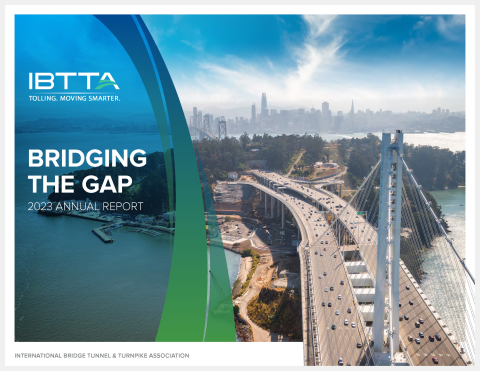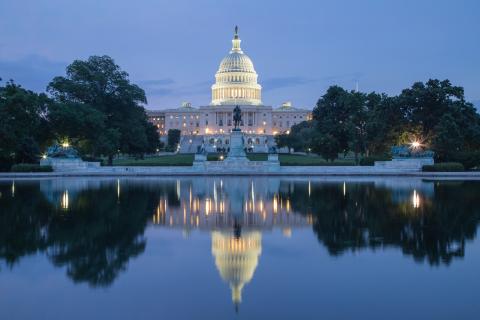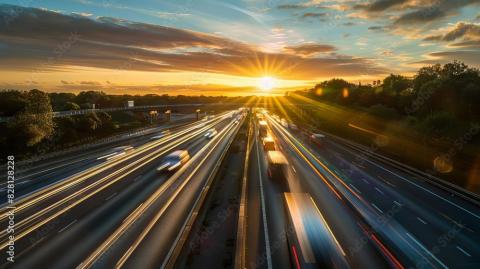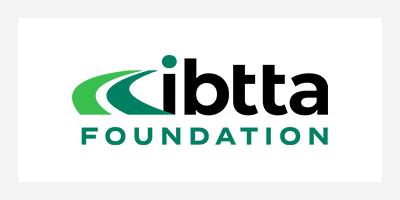- Home
- How Global Climate Policy Will Shape Local Transportation Decisions
Stories
How Global Climate Policy Will Shape Local Transportation Decisions

By Mitchell Beer, Smarter Shift, consultant to IBTTA and an attendee for Smarter Shift to both the Paris and Marrakech Summits
While everyone holds their breath today (from all sides of the political spectrum) for the results of the U.S. federal election, an event taking place on the other side of the world will have an even bigger, more lasting impact on transportation and tolling.
The 2016 United Nations climate change summit began yesterday in Marrakech, Morocco. It continues through November 18. The proper name of the conference is the 22nd Conference of the Parties (COP) to the United Nations Framework Convention on Climate Change…which is why you’re a lot better off if you just call it COP 22.
Attending the COP, you almost inevitably get immersed in the specialized jargon and abstract process points that are part and parcel of an intricate international diplomatic process. But make no mistake: The decisions reached in Marrakech, whatever they turn out to be, will have a profound impact on surface transportation—on the business and environmental conditions in which tolling agencies finance, build, and operate infrastructure, on the mix of modes and technologies on tomorrow’s roadways, and on the frequency and severity of the wacky weather that agencies and their customers will have to cope with.
Over a slightly longer time span, an increasingly unpredictable environment and economy stemming from the poor decisions, policies, and investments would make it tougher to operate any infrastructure at all. That’s what will happen if we miss a narrowing window to drastically reduce greenhouse gas emissions and avert the worst impacts of climate change.
The takeaway: There’s still time to get this done, and last year’s Paris Agreement was a spectacular step in the right direction. But every minute counts, and Marrakech is the international community’s next opportunity for progress.
From Paris to Marrakech: A Great Start, But We’re Not There Yet
The meeting in Marrakech sets the stage for implementation of the decisions from its much higher-profile predecessor. The Paris conference last December was about reaching consensus on a broad strategy to limit greenhouse gas emissions and, to the astonishment of many, delegates from almost 200 countries delivered: for the first time in human history, they concluded a global agreement aimed at keeping average global warming below 2.0°C (3.6°F).
Even more important, they set a long-term target of 1.5°C (2.7°F), to be achieved in the second half of this century. A half-degree Celsius may not sound like a lot, but it could shape or reshape the future of coastal communities from New York to Miami, the west coast, the United Kingdom to Bangladesh—and determine the use and longevity of the infrastructure those communities take for granted.
And in the 11 months since the Paris conference wrapped up, the momentum has held, with surges of progress that somewhat balance the deeply worrying news about local weather disasters and atmospheric carbon levels:
· The Paris Agreement itself wasn’t expected to enter into force for three or four years after the conference. That’s how long diplomats expected it to take for at least 55 countries, representing at least 55% of global emissions, to ratify the deal. It entered into force last Friday, November 4, which means it’s now binding on the 94 countries that have adopted it so far. (Click the link for updates as the number of countries is increasing frequently.)
· In Kigali, Rwanda last month, nations agreed to limit emissions of hydrofluorocarbons, a climate-busting refrigerant that was on track to add another 0.5°C of warming to the global system.
· In the last several years, we’ve seen renewable energy prices continue to plummet, and affordable energy storage is emerging as a game-changer for transportation as well as buildings. In February, Bloomberg New Energy Finance estimated 2022 as the year when electric cars will cost less to own and operate than internal combustion vehicles. In October, Fitch Ratings warned of a trillion-dollar “investor death spiral” for oil markets as the balance between energy options shifts. When that happens—and the question is when, not if—the good news for climate will create interesting times for user financing, as gas tax revenues begin falling even farther, even faster.
Climate Solutions Mean Infrastructure and Finance
A major focus for Marrakech delegates is to set a process for countries to increase their climate “ambition” and achieve faster, deeper greenhouse gas reduction targets. Climate finance is also high on the agenda, though it’s not the kind of finance discussion you’ll usually hear at an IBTTA conference—at the COP, it’s an urgent, ongoing conversation about funding commitments from developed countries that gained the most from the fossil fuel era, directed to small island states and other vulnerable countries that are already bearing the brunt of climate change.
But the whole point of the COP process is to drive from policy and process to implementation. And as the pieces fall into place, tolling and transportation organizations will begin to see themselves in the picture.
As climate impacts become more pronounced, right around the world, resilience and adaption will become more important factors in the design, placement, and uses of highway infrastructure.
As communities decarbonize—more and more cities are setting 100% renewable energy targets by mid-century—local and regional tolling agencies can expect to see shifts in planning policies, modal choices, and the infrastructure mix that results.
And at the global scale, climate policy will almost certainly affect priorities for the $57 trillion in infrastructure investment that McKinsey & Company foresees by 2030, just to keep pace with projected global GDP growth.
All of which makes climate impacts and policy another one of the mega-trends to factor in, whenever a tolling or transportation agency tries to anticipate future opportunities and potential threats. Over the next 10 days, however the negotiations turn out, the Marrakech conference will be a good bellwether for what the future might hold.
For a look at tolling agencies’ response to severe weather, download a copy of Adaptation and Resilience, the report of IBTTA’s forum on the response to Superst
Joining IBTTA connects you to a global community of transportation professionals, offering unmatched opportunities for networking, knowledge-sharing, and collaborative innovation in the tolling and transportation sector.
Follow IBTTA on social media for real-time updates on transportation trends and collaborative opportunities.





